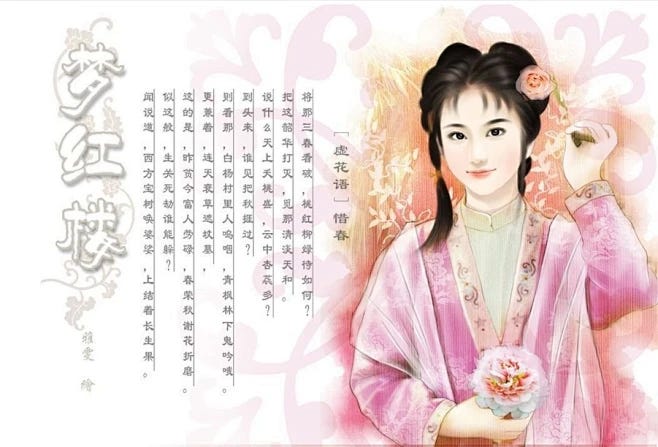The Violence Of Peace
Instead of telling you who yesterday’s poem was about, let’s look closer at the imagery.
Most of the translations of Dream of the Red Chamber that you come across will spoil things for you from the start. In fact, one of the comments on a recent YouTube video told me that there’s no such thing as spoiling in literature.
That’s obviously wrong, of course, and I’m more than happy to keep at least a shroud of mystery over this work. We’ll keep it mysterious for the time being.
And, besides, there are more interesting things to talk about. Check out this line from yesterday’s poem:
則看那白楊村裡人嗚咽
青楓林下鬼吟哦
更兼著連天衰草遮墳墓
Look at how the people in the white poplar villages weep
And how the ghosts moan among the green maple trees
And how the endless withered grass shrouds the tombs
For a poem that is about renouncing the world and embracing a life of religious piety, isn’t this a violent line? The “white poplar” that the villages are made of is a symbol of the grave, as is the “green maple trees” that contain the moaning ghosts.
But is the non-religious life really filled with nothing but misery?
Think about that when you read the next line:
這的是昨貧今富人勞碌
春榮秋謝花折磨
Indeed, poor yesterday and rich today, the people strive and toil in vain.
Blooming in the spring and fading in the autumn, the flowers are tortured.
This is an even more violent and scary line than the one before it. The people work and toil for nothing, finding no salvation or escape from the endless cycle (生關死劫) of the illusory world. And this is symbolized by the flowers being tortured by the blooming of spring and the fading of autumn.
But what kind of religious language is this? Are we supposed to meekly follow arbitrary religious rules because everything in the world is ugly and horrid?
Personally, I see Cao Xueqin’s skepticism of organized religion showing starkly through this language. But what do you think?



